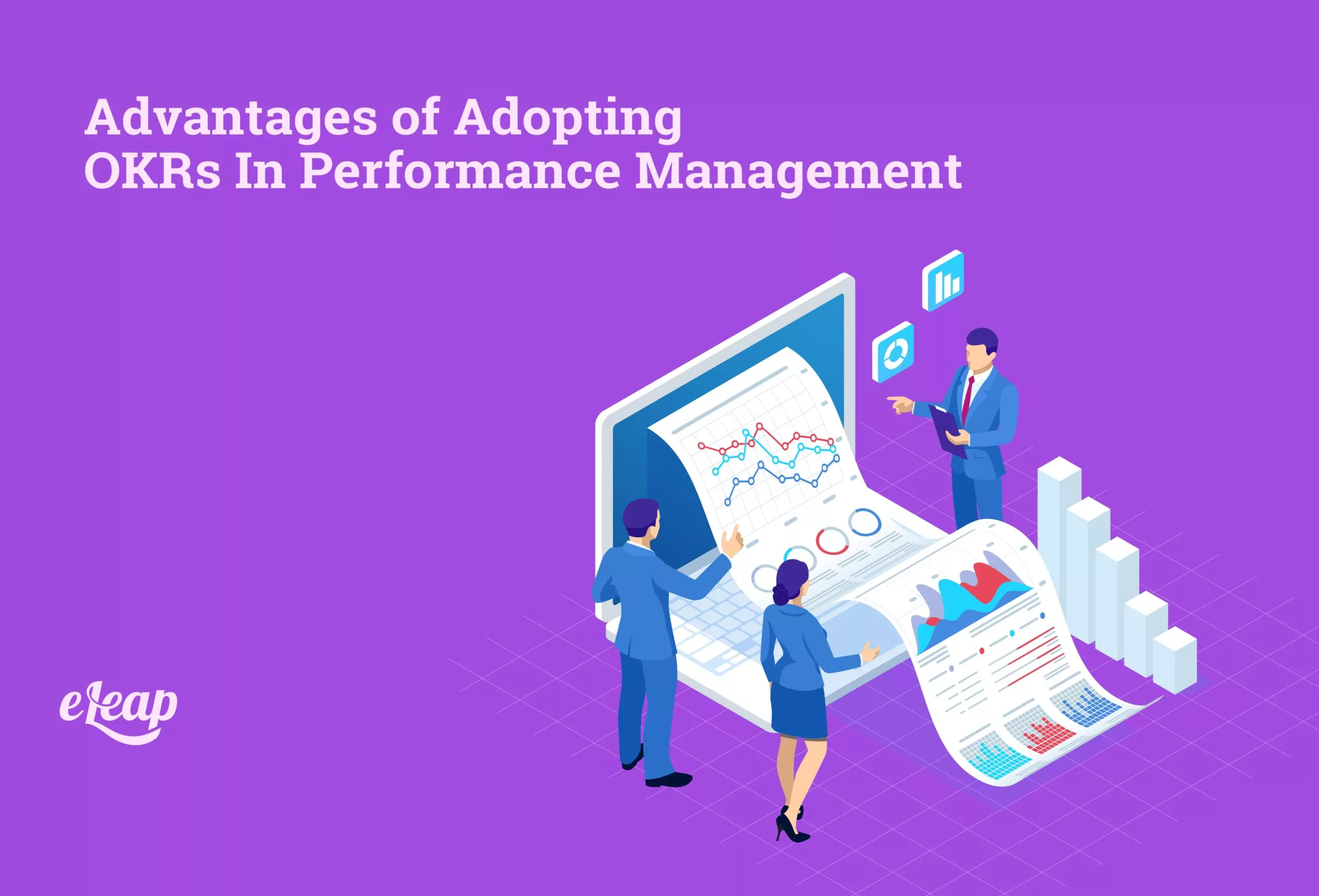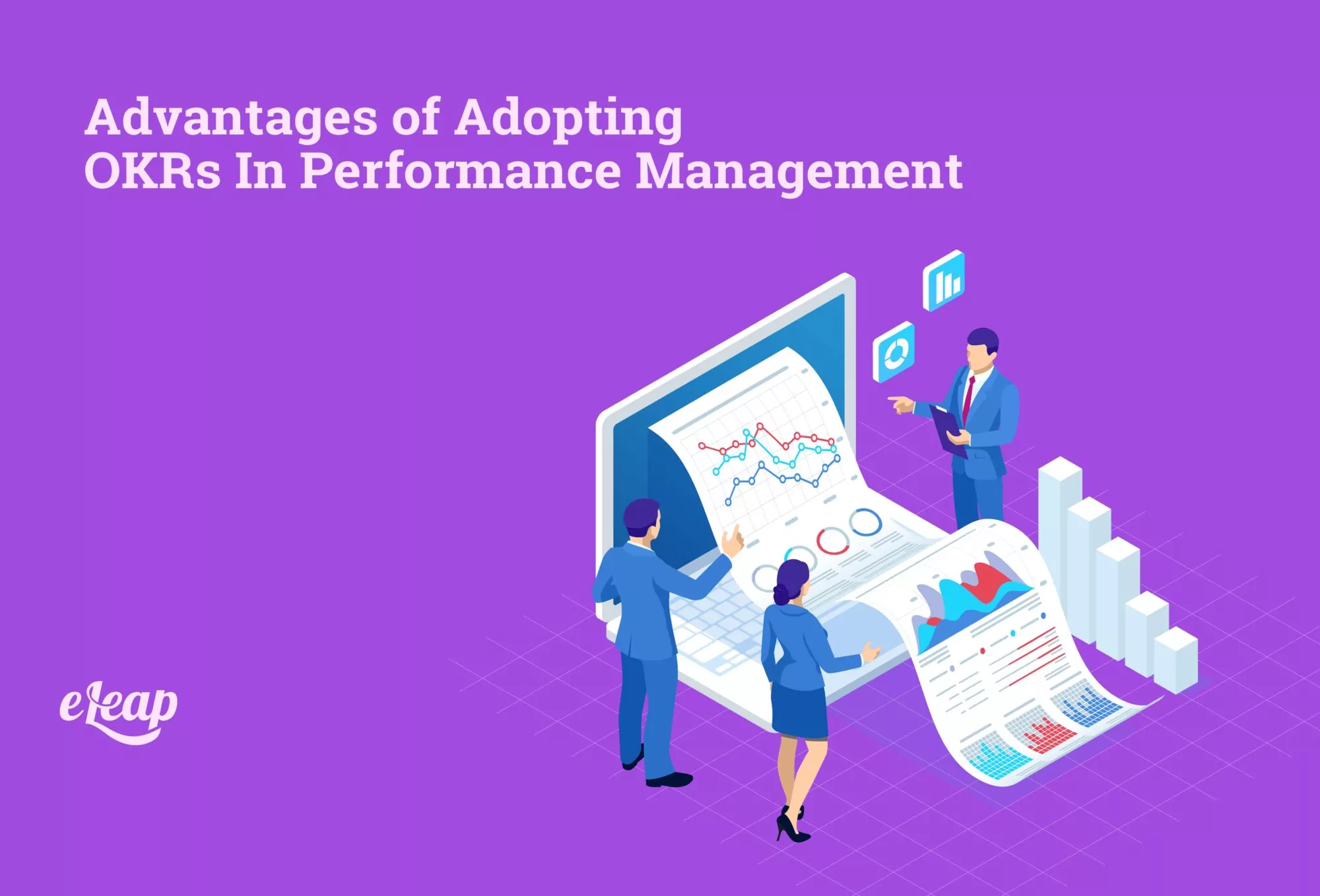Advantages of Adopting OKRs In Performance Management

In a previous article, we briefly touched on OKRs and how they can be effective for your PMS platform. If you aren’t familiar with OKRs, you could be missing out on significant advantages when it comes to performance management.
If you’re not familiar with OKRs and what they entail, perhaps the best place to start is to understand what they can do for your organization. Implementing an effective OKR can produce the following results for your organization:
- They allow continuous feedback and a frequent performance review system.
- They provide clarity on what you should be prioritizing to help your company succeed.
- There is more transparency and alignment with organizational objectives and team member goals.
- OKR-based performance management makes goal attainment a priority and keeps team members focused on hitting their objectives.
- The transparency involved with these programs allows for a better understanding of everyone’s objectives and how they can benefit and support one another.
OKRs can be incredibly effective when they’re used as a performance management tool. Let’s examine why successful organizations prioritize using an OKR.
OKR stands for “Objectives and Key Results.” These lay out your objectives and strategies needed for certain levels of achievement. They also highlight the effectiveness of your implementation and how this affects the outcome of performance management.
This basic approach allows you to gain an advantage over other performance management approaches. The popularity of OKRs has been rising for the last few years. They can be executed on a quarterly basis or even monthly, depending on your organization’s response to the impact of external elements.
For example, the lockdowns would be considered an external element. OKRs are important to many organizations as it allows team members to set ambitious goals and push the boundaries for your company to achieve higher levels than ever before.
When you implement an OKR, you get to follow a simple and straightforward outline that defines and measures goals. They also ensure the alignment of team member goals to organizational objectives. This provides a singular direction for all of your team members to place their focus on. In the end, this leads to improved performance for all parties involved.
Let’s examine the advantages of an OKR within a performance management system.

Alignment That’s Organization-Wide
When organizational objectives are set at the highest level, you can begin real work. As companies shift from planning OKRs to executing them, management and team members tie their daily actions to the organization’s company-wide vision.
The term for this is alignment, and you should never underestimate the value of this alignment. Companies with highly-aligned team members are likely to become top performers.
Frequently Reviewed
Get the normal thinking of annual goals and performance reviews out of your mind. OKRs are normally reviewed every quarter or monthly, depending on how agile your company is.
This system is much better suited for the fast-paced environment of today’s corporate world. Constant transformation has become normal in today’s environment. The frequent review of performance guarantees ongoing conversations and dialogue between managers and team members.
This leads to better communication overall between management and peers alike. When team members are able to efficiently communicate with one another, this increases the collaborative environment of your organization.
Quantitative In Nature
What can’t be measured can’t be improved. This old saying couldn’t be truer when speaking of the corporate world. Many goal-setting outlines focus only on the goal but not the path that it takes to hit those goals.
The “KR” portion of OKRs means that you can really dive into what it takes to define success. This gives everyone clarity on how their individual performance affects the organization. They also have a better understanding of what objectives they should spend more time on and what success looks like.
Because of these metrics, team members know what steps and actions they must take to deliver results. This helps them to create the most efficient strategic priorities.
OKRs Can be a Top-Down, Bottom, and Sideways Process
OKRs don’t always roll from the top downward. What we mean by this is usually, leadership sets goals first and then is followed by managers and then teams. They can be set from the bottom up or even sideways.
Objectives using OKRs may be chosen by individuals and merged with the company’s objectives as a whole. When this is done, it ensures the involvement of every single member of your organization. This gives them ownership of and engagement with OKRs.
This also makes employees feel less burdened when they are allowed to choose their own objectives. Even when teams and team members achieve higher goals, reviews can become need-based, and goals can be tweaked as required.
OKRs Don’t Link Performance Management to Compensation
These platforms stay clear regarding the decision of bonuses and compensation. Sometimes, this leads to organizations losing focus on goal attainment. These links will make individuals play it safe when it comes to objectives, and they do only what’s needed to get bonuses and raises.
Some even resort to malpractices to meet their performance goals. With OKRs, the high goals set need to be achieved in full because of the built-in stretch. This is the primary reason why OKRs don’t get linked to any type of pay or bonuses.
In the end, OKRs place emphasis on teams achieving success collectively. Everyone can move toward their goals with complete understanding and clarity.
This allows employees a firm understanding of how important their position is within a company. One of the most significant results of this is that team members become much more engaged and that they set more ambitious goals.
At this point, you might be curious as to how you can take advantage of the effectiveness of OKRs. In reality, it’s not as difficult as you might think. If you already have the proper PMS platform in place, it’s actually quite simple.
All you need is a performance management solution to use OKRs as a goal-setting strategy within your organization. These help individuals understand what is expected of them at work and enable them to contribute toward the overall goals of your organization.